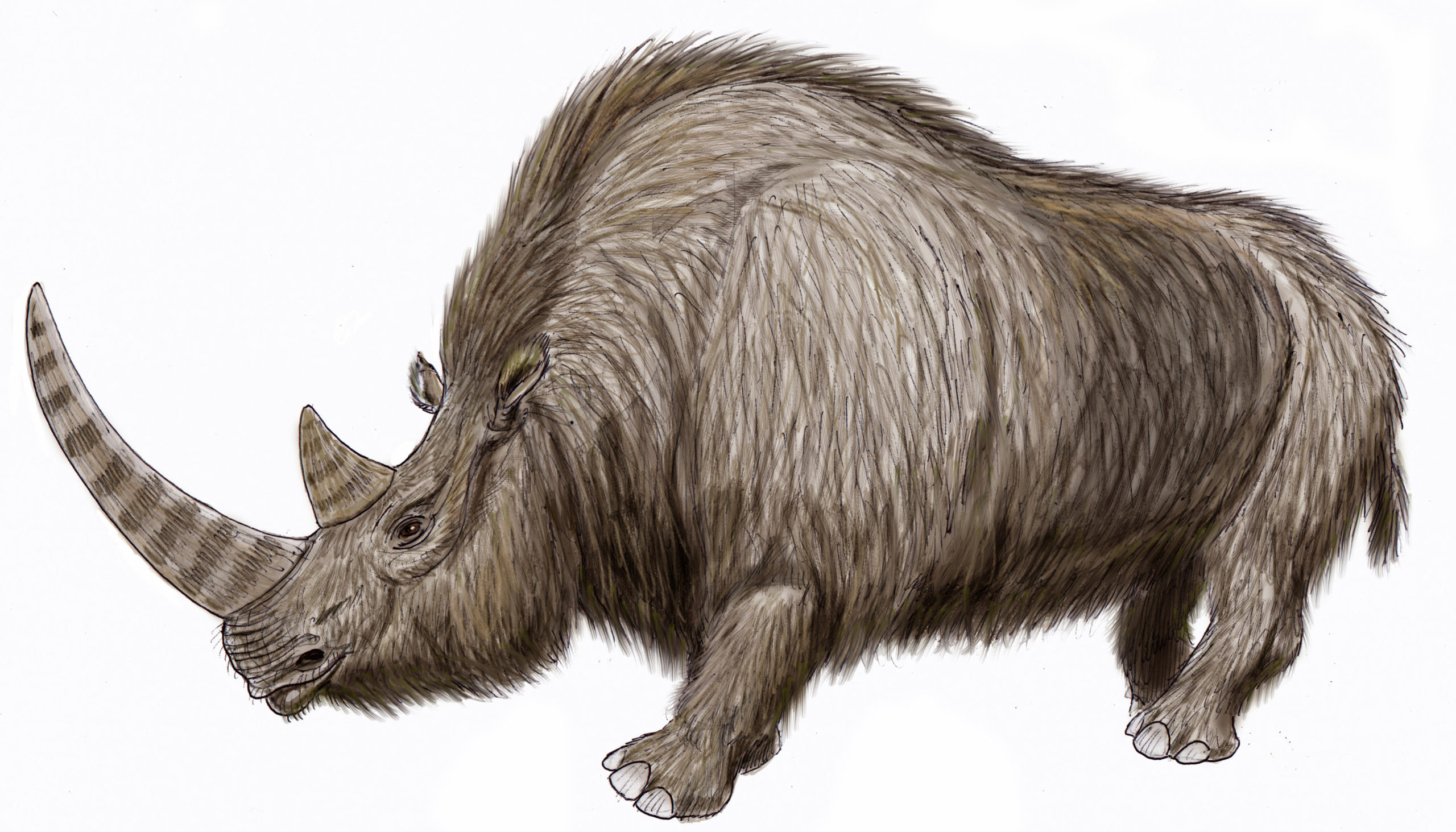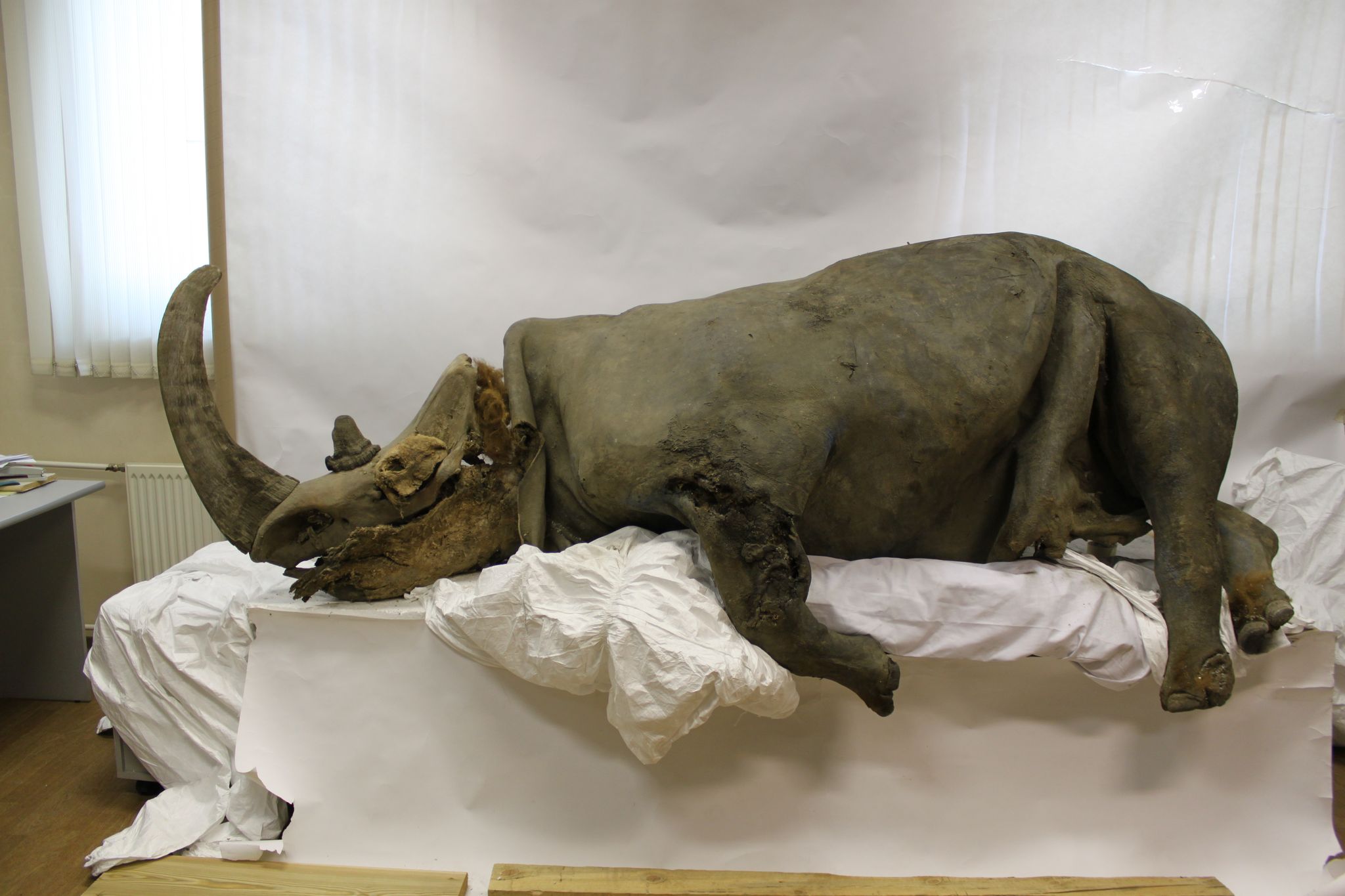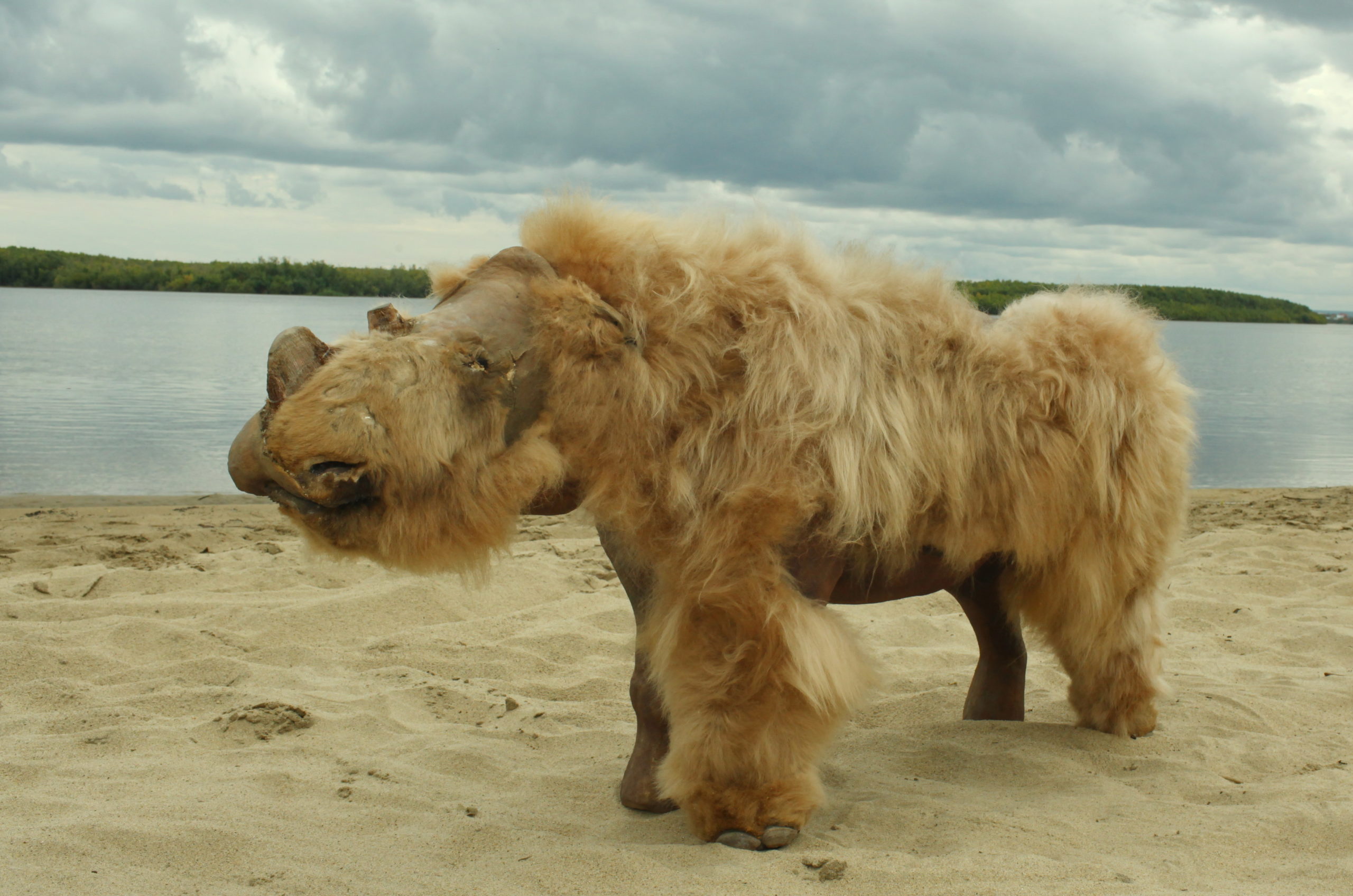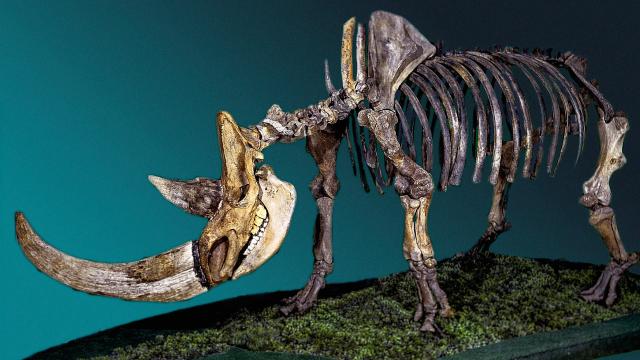New genetic evidence suggests it was a warming climate — not human overhunting — that killed off woolly rhinos at the end of the last ice age.
With cave bears, saber-toothed cats, woolly mammoths, giant sloths, and dire wolves, the Pleistocene was a cornucopia of megafaunal delights. And of course, there was the woolly rhinoceros (Coelodonta antiquitatis), an over-sized, shaggy version of the horned beasts we’re accustomed to today.
Weighing upwards of 2,000 kg and featuring a gigantic shoulder hump, these impressive herbivores occupied a vast territory that stretched from western Europe to northern Asia. The reign of woolly rhinos, which lasted for millions of years, came to an abrupt end some 14,000 years ago, with Siberia being the final venue of their long tenure on Earth.
Human overhunting and the end of the last ice age are the two causes typically attributed to their demise, though a thorough understanding of the reasons for their extinction is sorely lacking. New genetic evidence published today in Current Biology is adding colour to this tumultuous period of our planet’s evolutionary history, showing that it was climate change that put an end to this species.

With their colleagues, researchers Edana Lord and Nicolas Dussex from the Centre for Palaeogenetics — a joint venture between Stockholm University and the Swedish Museum of Natural History — sequenced the genomes of 14 woolly rhinos, extracting DNA from preserved tissue, bone, and hair samples. The team devised estimates of woolly rhino population sizes over time by sequencing a complete nuclear genome and by assembling over a dozen mitochondrial genomes, the latter technique providing an estimate of female population sizes.
Combined, this genetic data offered a snapshot of woolly rhinos from roughly 29,000 years ago to 18,500 years ago. As the authors show in the study, the population of woolly rhinos was remarkably stable and diverse in the thousands of years leading up to their extinction. If anything, the new data suggests these animals were actually doing quite well during the millennia leading up to the end of the last ice age.
“We actually don’t see a decrease in population size after 29,000 years ago,” explained Lord in a Cell Press press release. “The data we looked at only goes up to 18,500 years ago, which is approximately 4,500 years before their extinction, so it implies that they declined sometime in that gap.”

“This is not something we knew before and indicates that the decline towards extinction happened quite close to the final disappearance of the species,” explained Love Dalén, senior author of the study and an evolutionary geneticist at the Centre for Palaeogenetics, in an email.
The new DNA analysis also revealed special adaptations to the cold, such as an enhanced ability to sense warm and cold temperatures. These animals also exhibited higher genetic diversity than woolly mammoths and the rhinos still around today.
This data does not jibe well with the notion that ice age human hunters drove woolly rhinos to extinction. Humans, as we’re learning, were active in northern Asia some 30,000 years ago, long before the disappearance of this species. What’s more, the apparent stability of woolly rhinos during this expansive period suggests humans played a minor, if not negligible, role in their demise.
“We found that after an increase in population size at the start of a cold period some 29,000 years ago, the woolly rhino population size remained constant and that at this time, inbreeding was low,” explained Dussex in the press release.
That inbreeding was low is quite revealing, as lack of genetic diversity is a telltale sign of a species in big trouble. Just ask the woolly mammoths.
Of course, it’s possible that humans still played a role in their extinction, but Dalén thinks it’s unlikely.
“In a way, I guess it is not too surprising that we don’t see an effect of human arrival,” he said. “A two-tonne armoured beast, with a 1.5-metre horn and a bad temper, is perhaps not something paleolithic humans would have been that keen on poking with a spear.”
Indeed, this paper raises an important point, in that humans are often blamed for extinctions that happened at the end of the Upper Paleolithic. For these tiny bands of humans just struggling to survive the harsh ice age environment, it seems a stretch to suggest they could wipe out entire species of gigantic herbivores, whether woolly rhinos or woolly mammoths. Dalén agrees.
“I personally think it is unlikely that humans back then would have had the capacity alone to hunt a species to extinction, except on small islands,” he said. “The main reason is that once a favoured prey becomes rare, predators tend to switch to another prey species. Also, for the really big ones, such as rhino and mammoth, it seems to me that the risk and difficulty of hunting these animals would have been too large to do on an ‘industrial’ scale.”

That said, we know that early humans in Siberia hunted many smaller herbivores, such as steppe bison, stilt-legged horse, reindeer, and muskox.
“Although I don’t think humans alone could have driven these to extinction, it certainly seems plausible that a combination of human hunting and environmental change driven by climate warming could have led to the extinctions of, for example, the ice age stilt-legged horse and steppe bison,” said Dalén.
As to how the changing climate made life so difficult for the woolly rhino, that remains an unanswered question. Warming temperatures between 14,700 and 12,900 years ago resulted in increased precipitation, converting the open steppe into a shrubby environment.
“Personally, my hypothesis is that the change in precipitation might have been a major force, since this may have led to both increased moisture in summer, resulting in more swamps and bogs, and increased snow cover in winter, making it more difficult to find food if you are a grazer,” explained Dalén.
In terms of future work, the team would like to acquire more DNA from that troublesome gap between 18,000 and 14,000 years ago — clearly a time when something rather unfortunate began to happen to the woolly rhinos.
